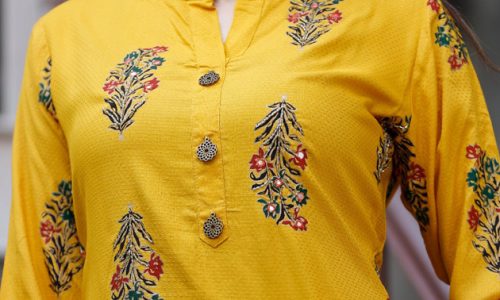
Marine Layer, the California brand, recognized for their laid-back, outside-friendly aesthetic has launched a number of new t-shirts that consists of out waste — old t-shirts delivered to them by customers.
Chief executive officer Michael Natenshon states, “This has developed in the creating a lengthy time. It was not easy building the procedure and infrastructure to achieve this. Recycling clothes isn’t necessarily as simple as it appears.”
That’s because recycled fibers can lack the effectiveness of their virgin counterparts. Plus, the entire process of separating blends requires expertise and experimentation – something the Marine Layer team, he states, have been developing for a long time before launching ReSpun.
Purchasers to transmit
Over christmas, Marine Layer known as for purchasers to transmit within their used tees from the brand, not only their own, as well as in any condition. They recognized all sorts of materials, barring activewear. Why? “That stretchy spandex is difficult to interrupt lower. Rather, work up and employ it to dry dishes. That stuff is much like magic,” they advised customers on their own site.
“If we ended up getting some spandex, we sent so that it is recycled for insulation, for instance,” he clarifies.
Blended fibers of polyester and cotton, that is most tees available on the market, pose a sizable enough challenge by themselves. Could the organization create something which was similar to their existing collection? “We didn’t wish to released only a t-shirt, it required to endure what we should have within the shop already — exactly the same quality.”
T-shirts
The aim ended up being to get 10,000 t-shirts, Natenshon explains. They hit that goal rapidly with 25,000 shirts flowing within the first month. Up to now, they’ve collected greater than 70,000 tees.
It makes sense eight types of tees, four for men’s as well as for for women’s, now on purchase around the Marine Layer site, that are constructed with 100 % of recycled content, constituting all of 50 % recycled cotton and 50 % polyester. The costs vary from $50 – $100 (so yes, expensive).
The fabric is soft, consistent with Marine Layer’s focus like a brand to create the softest tees possible. It was achieved by “sueding,” a phrase used in the market to wash the fiber against a tickly surface the friction, thus, creates a smoother result. Similar to exfoliating, you could say.

Upcycling textile
Marine Layer partnered with Spanish company, Recover, to produce this line: a business that’s experienced existence for 70 years, dating back 1947 and upcycling textile waste since that time — lengthy prior to the term sustainability even arrived to the current lexicon. “They began carrying this out during The Second World War to become more effective, and repurpose textiles,” Natenshon adds.
He acknowledges that shipping containers of used tees to The country features its own carbon footprint. But, the task, he states, is even finding partners who’re willing, interested, and able to do the work.
Ecological challenges
As he began the company in ’09, the aim ended up being to produce the best t-shirt, he states. “We wanted to produce that super soft damaged in T-shirt. The chances were stacked us against though. I literally needed to charge $20,000 of material on my small charge card and also have it sent to my apartment in Bay Area. There have been a lot of initial hurdles. The is centered on scale so that as a brand new brand, it’s with enough contentration to outlive, not to mention consider a few of these ecological challenges.”
However, it’s more and more on his mind: within the next 2 yrs, Marine Layer is fine with having Re-Spun fabrics
Ultimately performs this model work economically for additional companies to duplicate?
“So far, this complete process is very pricey for all of us. I really hope it might be economical soon. But we simply needed to have a leap of belief and purchase up front,” Natenshon admits.
He’s wishing it becomes some thing mainstream along with other brands taking notice regarded the options with recycling textile waste. He’s keen to talk about their process, making it simpler for other people in the market to duplicate.
People wish to participate
Consumers, he argues, are hungry for solutions. “People wish to participate. They would like to help, participate. With regards to the apparel industry, there aren’t that lots of options of you skill to become more eco-friendly, and recycling. Or it isn’t very obvious.”
Thus, can smaller sized brands for example Marine Layer lead the means by this development and research phase because the fashion industry tries to scale back on their own carbon footprint?




